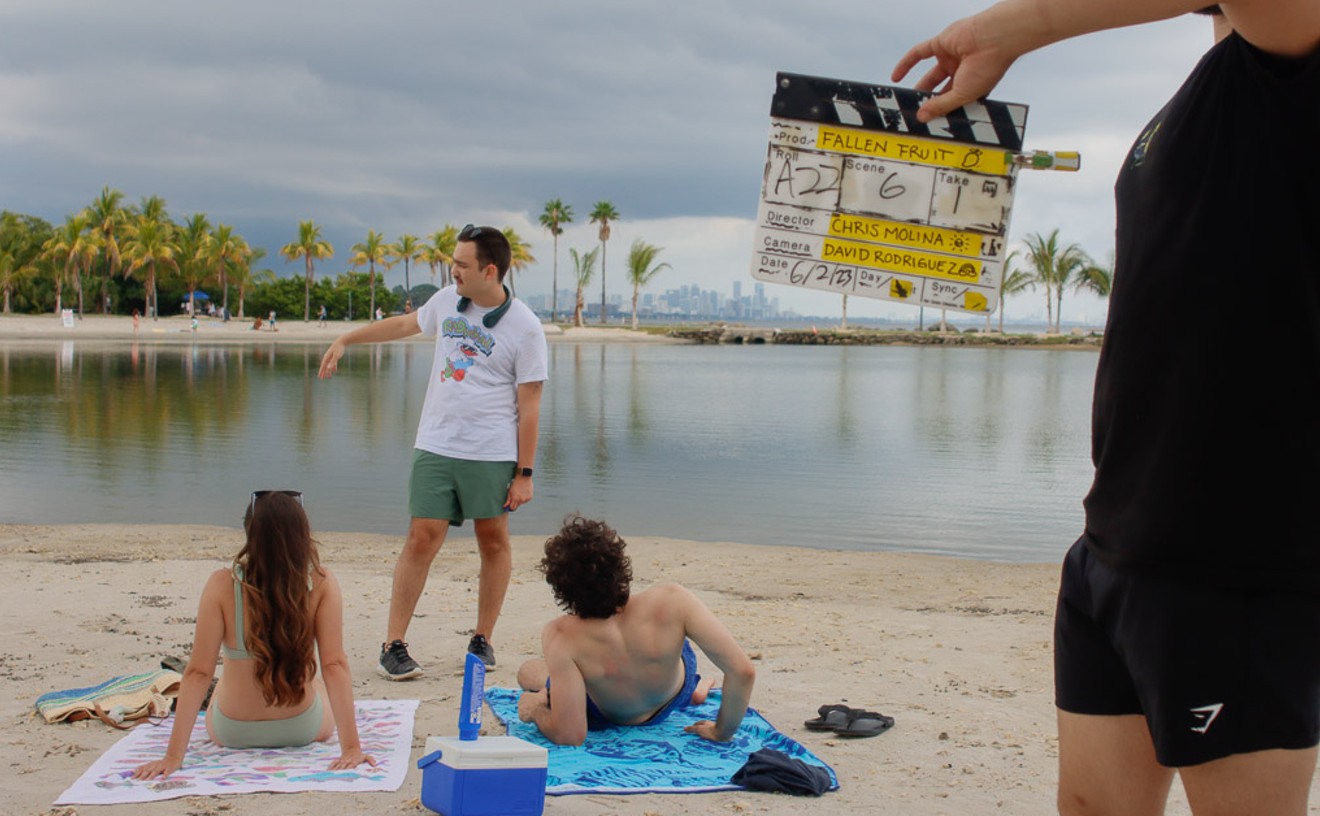The dingy spot next to where
This is the vision of two Venezuelans, artist Miguel
"Our hope is to elevate the profile of the local landscape with both our public art project and the art center,"
If it is built, the project would become the latest and perhaps most dramatic in a series of moves that is making Little Haiti a mecca of Miami's art scene. During the past year, stalwarts such as Gallery Diet and Pan American Art Projects have moved to the neighborhood to join others spearheading the renaissance in the gritty residential area awash in change.
In a way, Herretes is an ideal pitchman to help steer Little Haiti's resurgence. The 41-year-old attorney and businessman is a crackerjack negotiator who grew up in Washington, D.C., where his surgeon father served as a diplomat with the Venezuelan embassy. Later, Herretes studied law at the Andres Bello Catholic University in Caracas before returning stateside to earn an economics degree from the University of Chicago.
He plans to break ground in early summer and open this December during Art Basel.
tweet this
He spent summers in Venezuela, where he met Prypchan. The handsome artist, who is of Ukrainian and German descent and boasts the compact frame of an athlete, grew up in artists' studios in Caracas, where his father, a structural engineer, helped some of the nation's art titans carry out their vision.
"At an early age, I became very interested in kinetic art," Prypchan says. "My father collaborated with Venezuelan master Jesus Soto on the design of his installations."
Prypchan went on to become a constitutional lawyer with the Venezuelan attorney general's office and later opened a production company and ad agency. He began making art in the mid-2000s and produced dozens of sculptures of mountains.
But by the summer of 2010, the two men's lives diverged. While Prypchan began exploring the contours of Venezuela's high mountains, eventually producing more than 100 sculptures, Herretes began to fear for his life and decided to move to Miami. Crime began to dominate the lives of many in Caracas.
"Everyone owns an armored car in Venezuela. The night before my flight here, I had just finished dropping a friend at home after dinner when a group of malandros with assault rifles surrounded my car and shot up my windows," Herretes recollects. "I tell you, those muzzle flashes in my face scared me to death, and I'll never forget the experience."
A short month after arriving in Miami, Herretes began buying small properties in Little Haiti.
In August 2010, he purchased the former Jimmy's Tire Store. The site is located directly across the street from the Ayiti Project and just around the corner from the community's historic Notre Dame d'Haiti Catholic Church.
Herretes came up with the idea for the public art project and foundation as a vehicle to unify the community behind the neighborhood's cultural heritage. He says he hopes to preserve the community's identity and hold off gentrification. "It is impossible to stop the changes underway here," he says, "but our hope is to keep true to this area's distinct identity."
The developer, who traveled to Haiti with Prypchan during the artist's research visit, explains Venezuelans share a deep affinity for the people of that nation.
Prypchan's monumental abstract sculpture was inspired by Haiti's Bonnet a L'Eveque mountains, an icon of the Caribbean nation's cultural landscape, Herretes says. It will commemorate the 300,000 victims claimed by the catastrophic 2010 earthquake that devastated the island.
The sprawling public artwork, proposed for county-owned land on a median, will be titled Ayiti, Land of High Mountains. The $250,000 project takes its name from the indigenous Taíno name for "Haiti." They have raised $75,000 through public grants and private donations.
With its soaring jagged peaks and steeply angled geometric dimensions, Prypchan's renderings of Haiti's famous mountain range will look like an oversize piece of origami crafted by a colossus.
Prypchan typically flies his Cessna 206 over mountains to photograph and better understand their natural crags and curves and how light plays with their topography depending upon the region. When he returns to his studio, he employs 3D studies of the work to create models for his sculptures.
His research approach can sometimes pose challenges. "Once while paragliding, the direction of the air currents shifted unexpectedly, and a sharp tail wind forced me to land in a river that was full of boulders," he says.
In the past, Prypchan has documented the Matterhorn by crossing the Alps in a hot-air balloon. In Haiti, he used a drone to navigate Bonnet a L'Eveque for his current project.
"The colors in the tropics, the play of light, the whites, blues, oranges, and yellows of the glaciers, each is capable of stealing one's breath away," he observes.
So far, Herretes has been able to attract support for the project from Miami-Dade County Commissioner Audrey Edmonson. He says he plans to break ground in early summer and open this December during Art Basel.
"In addition to being a memorial to the countless victims of the Haitian earthquake, which every local in this community was impacted by," Herretes says, "the median will include landscaping, public benches, and hopefully become an oasis and place of reflection."










